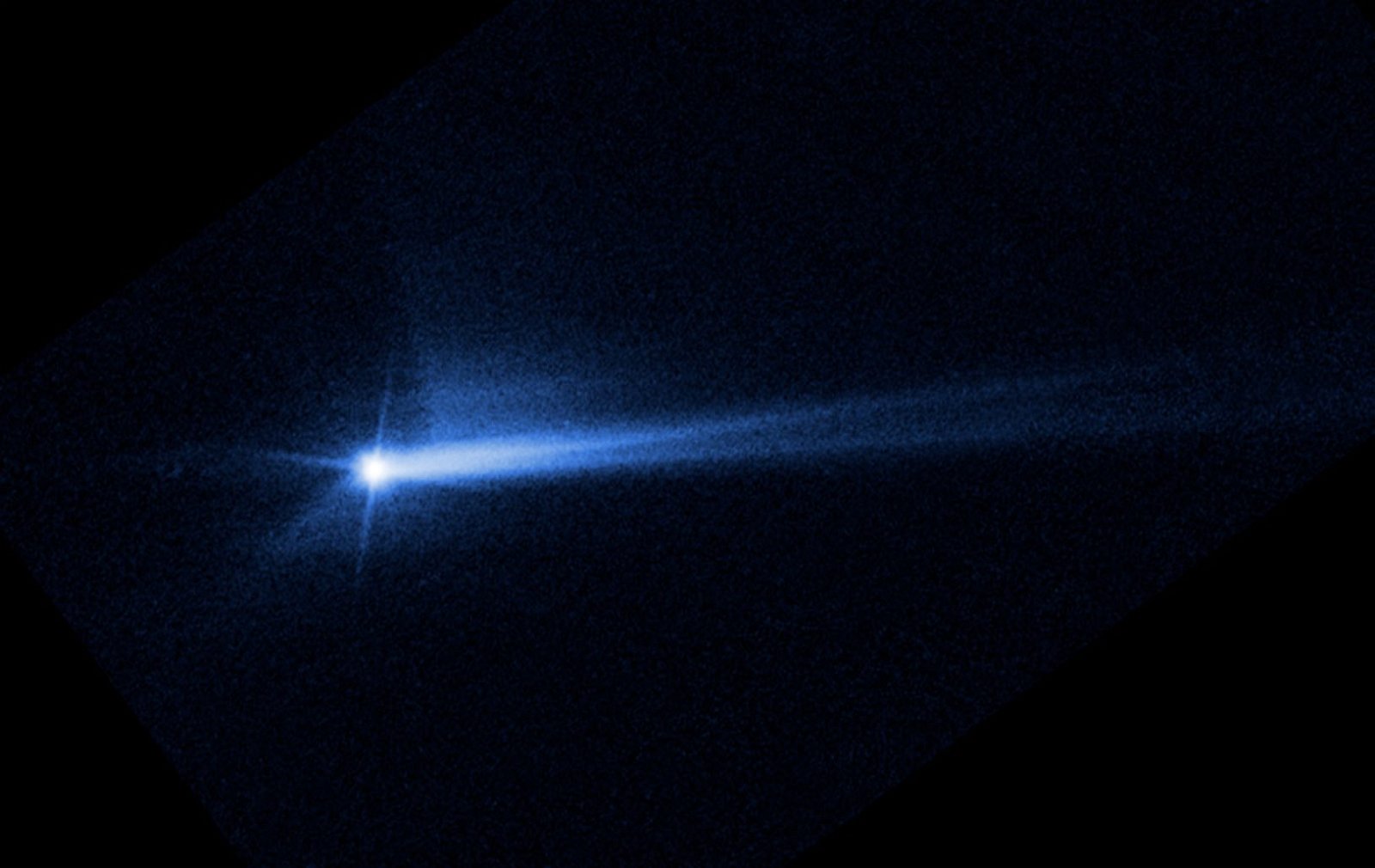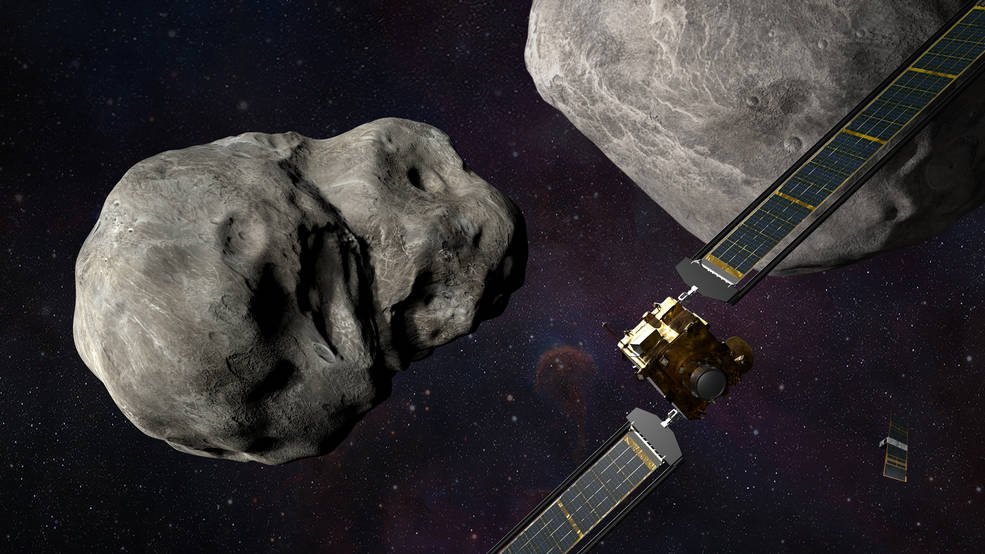

Welcome to this week’s installment of The Intelligence Brief… now that NASA’s investigation team has had time to go through the data following its Double Asteroid Redirection Test (DART) experiment, the preliminary results are in, and things are looking encouraging. We’ll be looking at 1) what NASA officials have learned following the spacecraft’s impact with asteroid Dimorphos, 2) the amount of change in the asteroid’s orbit around its parent, and why this was seen as being so successful, and 3) how NASA officials are responding to the promising results of the study.
Quote of the Week
“Asteroids have us in our sight. The dinosaurs didn’t have a space program, so they’re not here to talk about this problem. We are, and we have the power to do something about it.”
-Neil Degrass Tyson
Before we get into this week’s analysis, a few of the stories we’re covering this week include how an explosion tore through the Kerch bridge last weekend, crippling Russia’s link to occupied Crimea. Tim McMillan provides us with the latest. Elsewhere, a new type of magnetic quasiparticle has been created, according to researchers who coupled light with an array of extremely thin magnets. Also, NASA’s new inflatable heat shield may look like a flying saucer, but it could one day assist in landing humans on Mars.
Meanwhile, in video news and podcasts, early internet pioneer and longtime researcher of unidentified aerial phenomena Jacques Vallée recently joined us for a discussion on Rebelliously Curious with Chrissy Newton. Be sure to check out the interview and all our other video content on our YouTube channel. And, of course, check out all of our recent stories, which we’ve included at the end of this week’s newsletter.
With all that behind us, here’s what you need to know about NASA’s recent DART spacecraft experiment and how the technology it employed has now proven successful in potentially saving our planet from an asteriod impact.
NASA Offers Promising DART Mission Update
NASA reports that its Double Asteroid Redirection Test (DART) experiment, which launched a spacecraft into the asteroid Dimorphos, succeeded in its mission to alter its orbit.
It is the first time a spacecraft has changed the motion of an object in space, and it showcases the promise of kinetic impactor technology for future efforts to protect Earth from potentially deadly impact events.


“Analysis of data obtained over the past two weeks by NASA’s Double Asteroid Redirection Test (DART) investigation team shows the spacecraft’s kinetic impact with its target asteroid, Dimorphos, successfully altered the asteroid’s orbit,” read a NASA statement. “This marks humanity’s first time purposely changing the motion of a celestial object and the first full-scale demonstration of asteroid deflection technology.”
Not only has the efficacy of NASA’s DART spacecraft been demonstrated in the successful experiment, but data collected during the collision is now arming astronomers with potentially vital information that will aid in planetary defense for decades to come.
A Smashing Success
Leading up to the impact, the Dimorphos spent almost a full twelve hours in its normal orbit around Didymos, its parent asteroid. Viewing the impact event through telescopes, astronomers were able to watch the impressive collision and measure the alteration that occurred to the asteroid’s orbit. According to data assessments, NASA’s investigation unit reports that Dimorphos’ orbit around Didymos changed by more than half an hour, significantly shortening its orbit.
NASA reports an uncertainty margin for its estimate of no more than two minutes, indicating the significant change to Dimorphos’ orbit around Didymos. Significantly, the reported amount of change far exceeds some of NASA’s early estimates as far as what it identified as minimum success requirements.
“Before its encounter, NASA had defined a minimum successful orbit period change of Dimorphos as change of 73 seconds or more,” the space agency reported in an updated statement on October 11. “This early data show DART surpassed this minimum benchmark by more than 25 times.”
A View from the Ground and an Encouraging Future
Astronomers watching the collision watched as the DART spacecraft plowed into Dimorphos, launching a cloud of debris that resulted in an almost cometlike appearance as dust and stone spread through space over a distance of several thousands of miles.
NASA experts spoke with excitement following the successful mission.
“Let’s all just kind of take a moment to soak this in,” said Lori Glaze, NASA’s director of planetary science. “[F]or the first time ever, humanity has changed the orbit” of a celestial body.”
Conveying his trademark enthusiasm, NASA Administrator Bill Nelson emphasized the implications of such potentially planet-saving technologies going forward.
“All of us have a responsibility to protect our home planet,” Nelson was quoted saying in a press release. “After all, it’s the only one we have.”


However, Nelson also discussed the encouraging potential for future use of kinetic impact technologies, should we ever have to rely on them for planetary protection in advance of a real impact scenario.
“This mission shows that NASA is trying to be ready for whatever the universe throws at us. NASA has proven we are serious as a defender of the planet.”
“This is a watershed moment for planetary defense and all of humanity,” Nelson added, “demonstrating commitment from NASA’s exceptional team and partners from around the world.”
That concludes this week’s installment of The Intelligence Brief. You can read past editions of The Intelligence Brief at our website, or if you found this installment online, don’t forget to subscribe and get future email editions from us here. Also, if you have a tip or other information you’d like to send along directly to me, you can email me at micah [@] thedebrief [dot] org, or Tweet at me @MicahHanks.


Here are the top stories we’re covering right now…
- Flying Saucer? No, But This Inflatable Heat Shield Could Help Astronauts Land on Mars
NASA’s new inflatable heat shield, which may one day assist in landing humans on Mars, will soon be launched from Vandenberg Space Force Base.
- Study Says Multiplayer War Video Games Have Caused Some Children to Pass Out, or Even Die
Certain types of video games are believed to cause children with undiagnosed heart conditions to pass out, and in some cases even die, according to new research.
- Unsettling Security Threat Revealed as AI “Thermal Attack” Guesses Passwords in Seconds
A potential security threat has been revealed in a recent study where passwords were easily guessed by an AI-driven thermal imaging system.
- Do Astronomers Exist on Other Habitable Planets?
Could astronomers also be a possibility on distant habitable exoplanets, much like the ones who study exoplanets from here on Earth?
- A New Quasiparticle Has Been Created in Breakthrough Research by Physicists
A new type of magnetic quasiparticle has been created, according to researchers who coupled light with an array of extremely thin magnets.
- Destruction of Putin’s Bridge to Crimea – Here’s What We Know So Far
An explosion tore through the Kerch bridge this morning, crippling Russia’s link to occupied Crimea. Here is the latest and how this incredible attack was possibly carried out.
- Jacques Vallée: Pursuing Unidentified Aerial Phenomena and ‘Impossible Futures’
The 83-year-old scientist tells The Debrief what more than six decades of studying aerial mysteries have taught him about UAP phenomena and the scientific process.
- Could a Machine Learning Algorithm Find New Gravitational Lenses and Dark Matter?
The actual age of the galaxy as well as the total number of galaxies in our universe have perplexed scientists for decades. Thanks to space observatories like the Hubble Telescope or the James Webb Space Telescope, astronomers can see further into space, revealing more about our universe. Additional advancements like machine learning could help astronomers glean even more information from what telescopes can provide. Recently, with help from the Keck Observatory in Hawaii, a team of researchers was able to […]
- Brazilian Company Launches New Electric Car for Drivers with Disabilities
The market for electric cars is growing in Brazil, and new models of vehicles that use clean energy are emerging in the trade. Although it may seem like a recent initiative, the concept of the electric car has existed since the 19th century. However, over the last five years, a Brazilian developer has been working to create an electric car that is not only environmentally friendly but solves one of the biggest problems for drivers with disabilities: accessibility. The Stima, […]
- Suspicious Drones Seen Over German Military Sites Training Ukrainian Soldiers
A rash of suspicious drone activity near German military bases training Ukrainian soldiers raises concerns over possible Russian espionage.
- Open Science and Unidentified Aerial Phenomena
Avi Loeb weighs in on the recent controversial Ukrainian UAP study and reactions to it from other commentators.
- Russian Space Agency Seeks to Continue Operations Aboard the ISS Beyond 2024
This week, we look at how the Russian space agency is now looking at the possibility of continuing its space operations aboard the International Space Station beyond 2024.